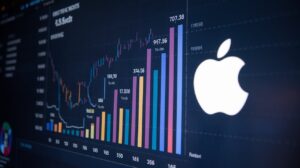Why U.S. Stocks Are Falling Fast — The Shocking Impact of Ongoing Trade Wars is the urgent question on every American investor’s mind as Wall Street suffers one of its sharpest declines in years. In this article, we break down the key causes behind the market chaos, explain what it means for everyday Americans, and help you understand how trade policies are shaking the financial foundation of the U.S. economy.
What’s Triggering the Sharp Drop in U.S. Stocks?
Explanation: This section uncovers the root cause behind the falling stock market — the U.S. government’s aggressive new trade policies.
On April 2, 2025, sweeping import tariffs were imposed under the so-called “Liberation Day” policy, including:
- 10% baseline import tariffs on all goods
- 54% tariff on Chinese imports
- Higher duties for certain nations
These tariffs have instantly escalated global trade tensions, especially with China. Markets reacted with fear, causing massive selloffs across U.S. stocks within just 48 hours.
A Look at the Market’s Reaction — Numbers That Matter
Here we break down exactly how U.S. indexes reacted after the tariff announcements — using hard data to clarify the scale of the drop.
| Date | Index | Change | % Drop |
|---|---|---|---|
| April 3, 2025 | Dow Jones | -1,679 points | -3.98% |
| April 4, 2025 | Dow Jones | -2,231 points | -5.50% |
| April 3–4 | S&P 500 | Total -10.81% over 2 days | |
| April 3–4 | Nasdaq Composite | Over 20% from recent highs | Bear market |
Which Sectors Are Getting Hit the Hardest?
Not all industries are suffering equally. This section explains who is taking the biggest hits — and why.
Sector Impacts most:
| Sector | Key Companies Affected | Why They’re Hit |
|---|---|---|
| Technology | Apple, Tesla, Nvidia | Global supply chain disruptions, dependency on China |
| Manufacturing | Ford, GM, Boeing | Rising raw material costs, slowing production |
| Agriculture | U.S. Soybean, Corn, Pork | Retaliatory tariffs from major buyers like China and Mexico |
How Trade Wars Impact the U.S. Economy
See how different components of the economy are connected to the trade war fallout.
TRADE WARS
|
----------------------------------------
| | |
Stock Market Manufacturing Consumer Prices
| | |
- Volatility - Cost Hikes - Electronics cost more
- Investor panic - Job cuts - Grocery bills rise
- Index crashes - Export losses - Inflation risk increases
What This Means for American Investors & Families
Here we translate the market chaos into real-world terms for everyday Americans — helping readers connect policy to pocket.
- Higher Prices: Expect increases in electronics, cars, clothes, and imported goods.
- Retirement Funds: 401(k)s and IRAs may lose value temporarily — stay diversified.
- Small Business Strain: Many businesses face higher costs and shrinking margins.
Is the U.S. Economy Headed for Recession?
This final core section addresses the big fear: are we heading toward a full-blown economic downturn?
- Consumer confidence fell 6.4% in March 2025
- Top CEOs, according to MarketWatch, now believe the U.S. is already in a recession
- Rising inflation and lower spending may lead the Federal Reserve to adjust interest rates
- Corporate hiring is slowing, particularly in global export industries
Economists warn: if trade tensions persist through Q2, the U.S. could see a negative GDP quarter by summer 2025.
U.S. Stocks and Trade War at a Glance
| Key Metric | Data |
|---|---|
| Dow Jones | -3,910 points in 2 days |
| S&P 500 | Down 10.81% |
| Nasdaq | Bear market status |
| Consumer Confidence | -6.4% (March 2025) |
| GDP Forecast (Q2) | Risk of contraction |
The ongoing trade disputes are more than just political battles — they’re reshaping America’s economic future. From Wall Street to Main Street, the ripple effects are already here. As uncertainty grows, staying informed becomes essential.
[USnewsSphere.com / MW]





